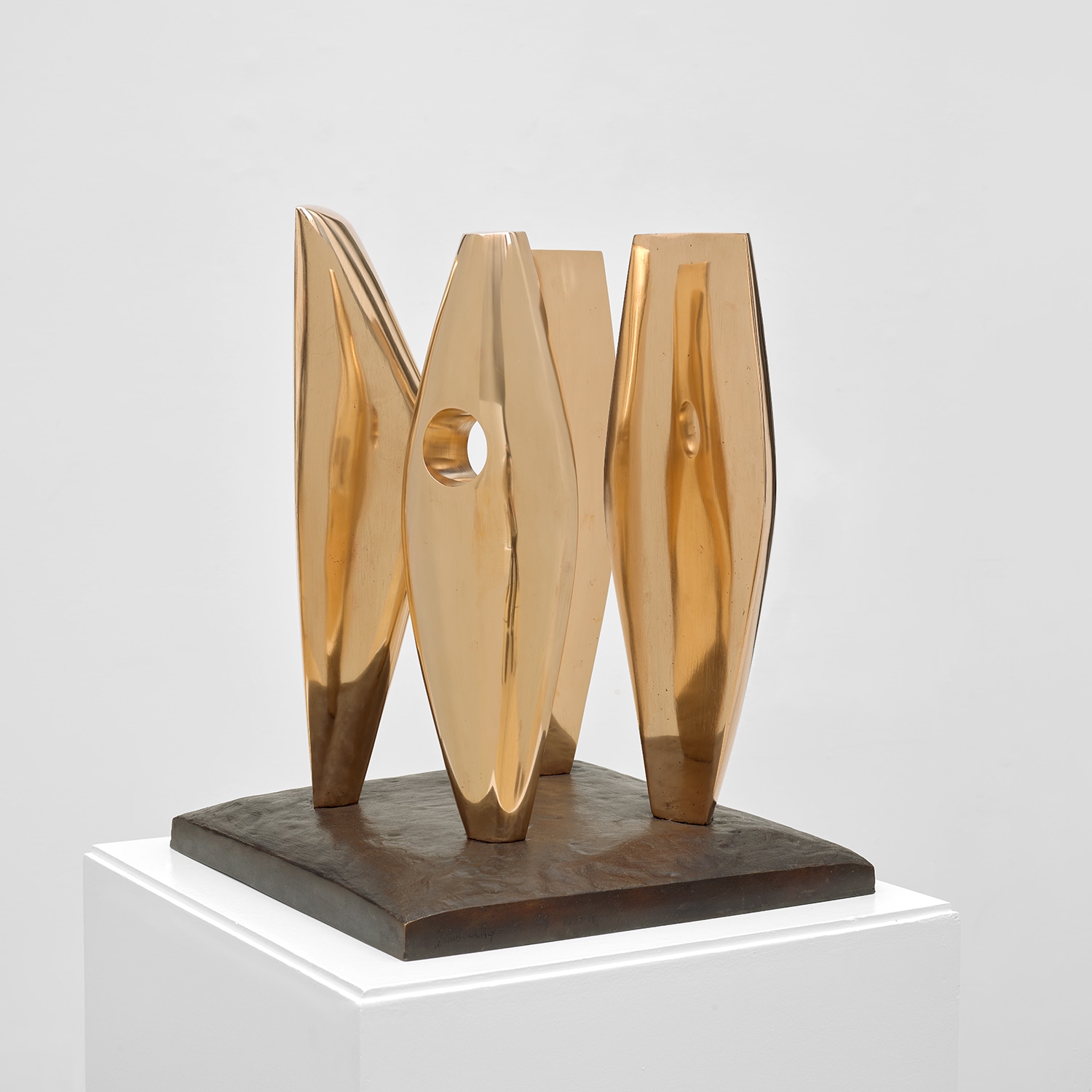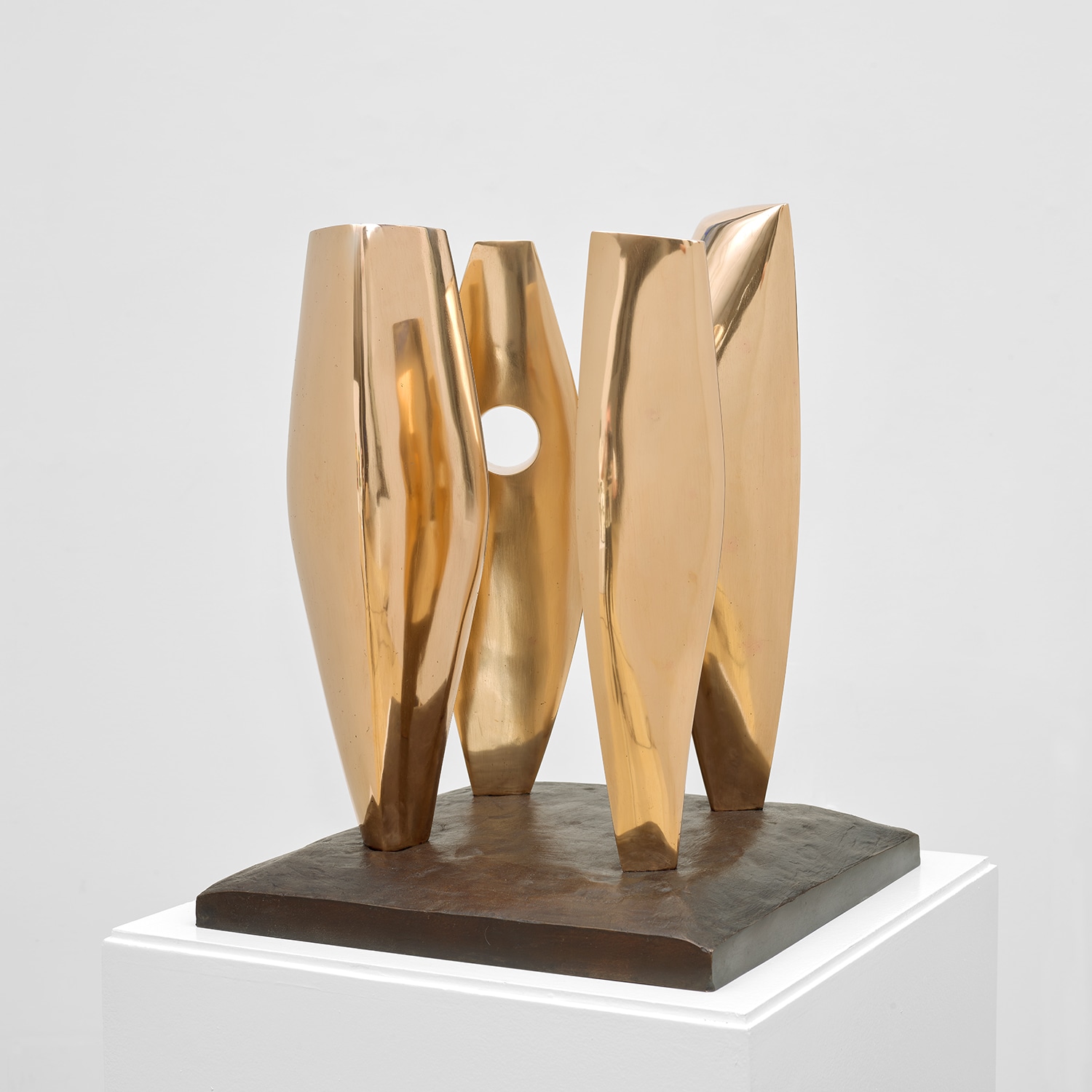





22Ο◆
Dame Barbara Hepworth
Four Figures Waiting
incised with the artist’s signature, number, date and foundry’s initials and name ‘Barbara Hepworth 6/9 1968 MS Morris Singer’ on the overturn edge of the base
polished bronze
62.2 x 48.3 x 48.3 cm (24 1/2 x 19 x 19 in.)
Executed in 1968, this work is number 6 from an edition of 9 + 0 (the artist's copy).